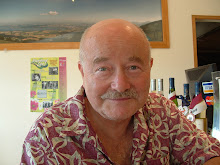The link above will connect you with Richard's CAC website. Below I have reproduced this particular meditation( highlights in red are my addition) to make just a few observations. The past month has seen my sojourning about Scandinavia in search of their ancient past especially related to the modality of labyrinth utilization. My feelings are reported in the adjacent post but the net result somewhat supports my thought that labyrinths are just "what you make of them". As a tool for contemplation they can be beautiful but so can many other modalities, a beautiful sunset on the beach for instance. The highlighted sections of the post below I believe really appropriately point to the connection between authentic contemplation and the embracement of Mercy.
It seems that our ancestors, the First Nations Peoples all over the world had a handle on this idea. Of course there is the issue of survival and meeting the basic needs for civilization that has influenced how merciful and peaceful peoples have been. It is a goal to strive toward and I believe that in today's world we have a transcending soul rising up which will make us truly "The Body of Christ" and Mercy and Love will Win. Lord Have Mercy! Pax Christi! RV
Richard Rohr's Daily Meditation
|
Transformation:
Week 1
|
The Ark of the Covenant
Monday, June 27, 2016
|
In his book The Soul's Journey into God, Franciscan theologian Bonaventure uses a most wonderful Old Testament metaphor to describe the contemplative mind; he says it is like the Ark of the Covenant housed within Israel's temple. [1] Exodus 25 describes in great detail how the Ark was to be built. It was first of all a kind of traveling temple so the Israelites could carry God around with them, wherever they went, until they finally settled the Ark in Solomon's permanent temple. But it didn't really hold God, which would have been idolatrous. The Ark of the Covenant was instead the "place-holder" for God--a brilliant metaphor!
The open space above the Ark of the Covenant was rightly called the "Throne of Mercy." Two golden cherubs protected the empty space, directly facing each other. "In that space," God says, "I will meet you" (Exodus 25:22). Mercy multiplies inside such open and free space. This is the work of contemplation--"guarding your mind and your heart" (Philippians 4:7) so that a Larger Presence can show itself. Such silence and emptiness is open to infinite horizons and True Transcendence in the way that nothing else quite is. Words always whittle God into small parts that we can seemingly grasp and understand. Read Max Picard's classic book, The World of Silence, where he masterfully describes this phenomenon. [2]
The golden cherubs protect an infinite opening, a silent unknowing that is a different kind of knowing altogether, a fully open space that only God can fill and inhabit, never our own small ideas and passing feelings. It is in this eternal, endless space where Yahweh rightly says to Israel, "I will meet you." Every other playing field is far too small.
Protecting infinite, empty, and merciful space is precisely what you do in contemplative practice. Most of what we call thinking is narcissistic reaction to the moment. Moment by moment, you're judging things and labeling them, whether they attract or repel you. That really isn't thinking, but self-centered reactions and the stating of your preferences to yourself. It takes work to return to the Ark of the Covenant, the placeholder space within you that is quiet, that doesn't get caught up in all your commentaries and emotional evaluations, up and down, in and out, with or against. Some kind of contemplative practice will allow you to watch yourself doing all of this and notice how futile it all is. In contemplation, your inner witness is still, like the golden cherubs, and lets everything else float by. It observes and learns from your thoughts and sensations, but it doesn't attach to any of them. It lets go and lets go and lets go.
This takes years of practice, until letting go becomes an art form. You learn not to be so opinionated, not to be emotionally dragged up and down, but to stay in this quiet place that watches everything come and go with calm equanimity. When you learn how to stay here, you'll recognize you are not your thinking and you are not your feelings. What you were thinking even an hour ago, you're not thinking anymore. Therefore it is not you. Your thinking is essentially unstable. Yet most people think they are their thinking! Such a life is inherently insecure. Many people in contemporary secular society have little solid ground on which to stand, to create a mature and happy life.
|
Gateway to Silence
Teach me how to see.
|










